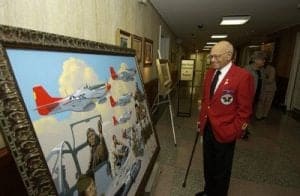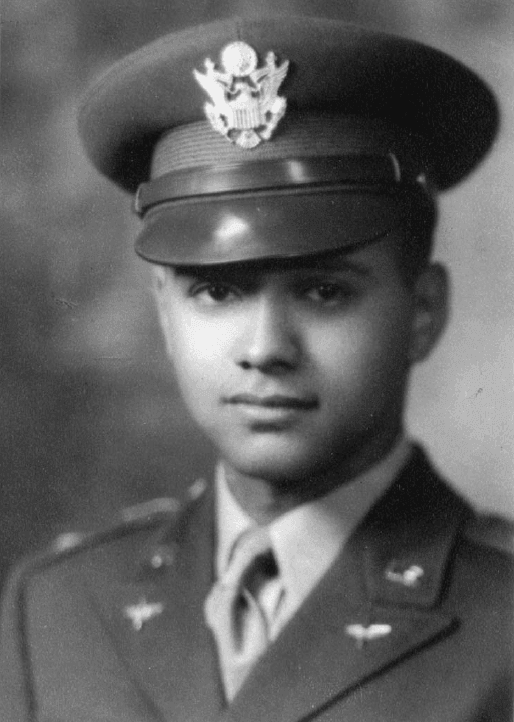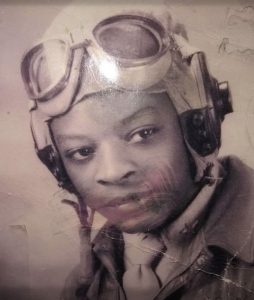February 16, 1918– January 1, 2013
As we know, not all Tuskegee Airmen were pilots. Many were support personnel, and in the case of Col Elmer Jones, some began their training as pilots but matriculated into other important support roles. Today we take a closer look at Col Jones and his respectable service, both military and civilian.
The pilots that became known as the Tuskegee Airmen got a shot at flying through the Civilian Pilot Training Program Act. This program, signed into law in 1939, was designed to strengthen the military’s preparedness prior to entering World War II while opening up pilot training to many who never had or would never have had an opportunity to learn to fly, including African Americans and women. When the program allowed candidates to apply from historically black colleges like the Tuskegee Institute, Hampton Institute, Coffey School of Aeronautics and Howard University, the history and legacy of the Tuskegee Airmen was set into motion.
Col Jones was among the first graduates of Howard University’s Civilian Pilot Training Program, where he received his pilot’s license in addition to an undergraduate degree in engineering. In 1940 he was sent to the Tuskegee Institute for advanced flight training in what was know as the “secondary program” of their Civilian Pilot Training Program.
But early in 1941, Jones was offered the opportunity to utilize his degree in a non-flying role to work in aircraft engineering. He was transferred to Chanute Field in Illinois with five other black aviation cadets, all to be trained as technical officers for the 99th Fighter Squadron. After finishing ground crew technical training later that year, the officers went back to Tuskegee to complete their hands-on training alongside the fighter pilots under the command of B.O. Davis, Jr.
Shortly after the attack on Pearl Harbor on December 7, 1941, Jones was commissioned as a 2nd Lieutenant and assigned duties involving aircraft repair and technical supply. He was assigned to the 99th Service Detachment, which was shipped overseas with the 99th Fighter Squadron in April 1943, serving in both North Africa and Italy.
Jones served as the Commanding Officer and Engineering Officer of the Detachment, and was later assigned as Commanding Officer of the 366th Service Squadron serving the 332nd Fighter Group after the 99th became a part of the 332nd Fighter Group in June of 1944.
See an interview with Col Jones produced by Illinois Public Media to hear him describe his experience in his own words.
Following the war, Jones continued his service in the US Air Force until his retirement in 1970. During his tenure, he also earned his master’s degree in electronics and communications from the University of Illinois and an MBA in research and development management from the University of Chicago Graduate School of Business. He became a research and development specialist with the Air Force, serving in various leadership positions including time at Lockbourne Air Force Base in Ohio and the Air Force headquarters at the Pentagon in Washington, D.C.
For ten years following his retirement from military service, he served as assistant commissioner for telecommunications of the General Services Administration. He passed away in 2013 at the age of 94.
In 2007 Col Jones was among the surviving Tuskegee Airmen to attend the presentation of the collective Congressional Gold Medal honoring the Airmen, presented by President George W. Bush. The House and Senate had voted unanimously to award the medal collectively to the pilots, bombardiers, navigators, mechanics, ground officers and all enlisted men and women who served with the Tuskegee Airmen. The award came over 60 years after the Airmen fought for their right to fight for our country’s freedom. Jones is quoted as saying; “It’s never too late for your country to say that you’ve done a great job for us.”
 Today we honor the memory of Col Jones, and acknowledge that it is never too late to thank the Tuskegee Airmen, not only for their service to our country during the war, but for paving the way for equal civil rights for generations to come. At the CAF Red Tail Squadron, we will continue to work hard to honor the history and legacy of these great Americans because of their courage and sacrifice, and today we salute Col Elmer Jones.
Today we honor the memory of Col Jones, and acknowledge that it is never too late to thank the Tuskegee Airmen, not only for their service to our country during the war, but for paving the way for equal civil rights for generations to come. At the CAF Red Tail Squadron, we will continue to work hard to honor the history and legacy of these great Americans because of their courage and sacrifice, and today we salute Col Elmer Jones.
Sources:
East Coast Chapter Tuskegee Airmen, Inc.
The CAF Red Tail Squadron is a volunteer-driven organization dedicated to educating audiences across the country about the history and legacy of the Tuskegee Airmen, America’s first black military pilots and their support personnel.






